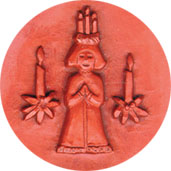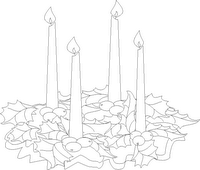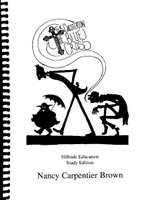In Defense of Real Literature
Lingua Mater, Language Lessons from Literature is an English course intended for use in 7th or as a two year course for 6th and 7th grade following the Middle Grade Lesson Plans from CHC. Each week's lesson includes a piece of literature or a painting to be studied, a writing assignment, and the study of one grammar concept.
Some people have expressed concerns about the use of the real literature pieces in the book and the method of instruction that we chose. To explain,
Lingua Mater is based on a book from the early 1900's called
The Mother Tongue. Most English books, all that I have seen, from that time period use real literature to teach/practice the grammar concepts. This is more difficult, but it is a really good exercise and a really good way to assess whether or not the child really gets the concept. If you look at the contrived sentences in some modern grammar programs, it is easy for the child to identify the grammar concept, so much so, as Laura Berquist has pointed out, that it is possible to do a workbook page without really getting the concept, just by figuring out the pattern in the book. Looking at a sentence that a child might actually see/read in a book in order to identify a grammar concept is harder and requires more analysis, but not only is it doable, it encourages growth in critical thinking. For example, when looking a sentence, whether it be simple or complex, a student can answer "What is the one person, place, or thing that this sentence is really about, and what is the one thing that is being said of it/him." It is possible without having advanced study to break apart a sentence to find the one thing that is predicated, especially at 7th grade, or with help in the thinking process in 6th grade. (This particular lesson comes up in Week 9.)
The pattern for introducing a grammar concept is the same in
Lingua Mater as in some other popular homeschool grammar choices, but without the excess drill, that is: definition, example, and then practice sentences. While
Voyages in English might introduce the objective case all in one lesson and define 3 or 4 different kinds of nouns in the objective case, we break it up over several weeks' lessons, studying
one kind of objective case noun per week. One grammar concept is examined over the whole week, with a new practice experience each day, perhaps small practice, but some.
If a student is using
Lingua Mater over two years, you have plenty of time to stop and focus on what is confusing or needs more work. For my son, he hit a wall at predicate nominative (confusing them with prepositions of all things!) and we had to take a lot longer with that before moving on. I scoured other grammar programs and none of them defined it or taught it in any different way. He just had to work with it a lot more before it could sink in . . . just like we had to work on long division, stepping aside of the book, for more than one or two lessons before it could sink in.
I have been thinking a lot about the grammar in LM and how it fits, how it works, why it is there, etc. I have really been scrutinizing the principles with which we set out to do LM (the CHC philosophy of gentle but thorough), mostly because I am working on LM 8 now and trying to solidify my vision of it, but also because some people have been turned away from
Lingua Mater because of the use of the literature instead of contrived drill work. But we named it "Language Lessons from
Literature" because we use real sentences, explore real thoughts, and encourage authentic discussion. We want the students to see, hear, and imitate good, real
writing.
I am torn between two views of the study of grammar. My liberal arts background says grammar is primary to all the other arts and should be most important, but my in-the-trenches teaching experience says grammar is a tool. Understanding it is important, but its end purpose is to serve writing. You can't have a student make a more complex sentence by using a clause unless he knows what one is. And . . . good writing is the end goal of
Lingua Mater.
Please feel free to post your comments on your success or struggle with
Lingua Mater.
Margot
BTW - I am open to suggestions for the nature of the grammar work in LM8. Right now I am focusing on grammar that is important for writing. For those of you who have used LM 7, what do you think?





 Prayer of Thanksgiving for Graces Received from the Infant of Prague
Prayer of Thanksgiving for Graces Received from the Infant of Prague 




